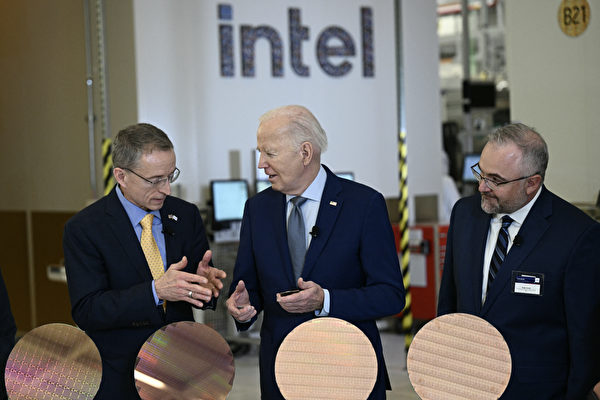A recent report indicates that by 2032, the United States’ semiconductor manufacturing capacity will double, controlling nearly 30% of global advanced chip production, while China’s share in global advanced chip production is only 2%.
On Wednesday, May 8th, according to a report released by the Semiconductor Industry Association (SIA) and the Boston Consulting Group (BCG), the United States is expected to see a 203% growth in domestic chip manufacturing within the first decade after the enactment of the Chips for America Act. This expansion will mark the first significant increase in the US’s share of global wafer fab capacity in decades, focusing on the global chip supply chain.
The research report titled “Emerging Resilience in Semiconductor Supply Chains” also predicts that by 2032, the United States’ share of manufacturing capacity for advanced logic chips (below 10 nanometers) globally will increase from 10% in 2022 to 28%.
The United States’ share of global wafer fab capacity has been decreasing over the years, dropping from 37% in 1990 to 12% in 2020, further declining to 10% by 2022. With most chip manufacturing located in Asia, the US government passed the Chips for America Act in 2022, allocating $39 billion to bolster domestic chip manufacturing capabilities and reduce dependence on supply chains from China.
The report projects that the US wafer fab capacity will double in the next decade (203%), expecting the highest growth rate globally compared to the modest 11% increase in the past decade (2012-2022). It also anticipates that from 2024 to 2032, US capital expenditure will account for over a quarter (28%) of global capital expenditure, second only to Taiwan (31%). Without the Chips for America Act, the report suggests that by 2032, US capital expenditure will only represent 9% of the global total.
The funding is expected to yield returns in the coming decade.
By 2032, the US is projected to hold 14% of global chip manufacturing output. In the absence of the Chips for America Act, this share is predicted to further decline to 8% by 2032.
Additionally, the report highlights that the Act will help the US significantly surpass Communist China in manufacturing the most advanced chips. Both the US and China currently lack the capability to produce chips below 10 nanometers. However, with federal funding support, companies like TSMC, Samsung Electronics, and Intel have agreed to increase investment in the US and produce the world’s most advanced chips domestically.
TSMC originally planned to manufacture 3-nanometer chips at its Arizona plant but will also produce 2-nanometer chips after receiving a $6.6 billion grant. Samsung has also committed to mass-producing 2-nanometer chips at their Texas facility with the $6.4 billion funding from the Chips for America Act.
According to the SIA and BCG report, by 2032, the US will have the capacity to manufacture 28% of chips below 10 nanometers.
In contrast, despite China’s government spending exceeding $142 billion to develop the domestic semiconductor industry, it is estimated that China will only be able to produce 2% of the world’s most advanced chips.
At the same time, export restrictions on chips from the US to China, especially on cutting-edge chips and chip manufacturing tools, contribute to China’s significant technological gap compared to the US.
SIA President and CEO John Neuffer stated, “Some of the measures in place now might slow that (chip R&D) pace.” He added, “(Communist) China’s foundation to catch up in the most advanced chips is much lower.”
The report also found that the US continues to lead the world in overall contributions to the global value chain, particularly in high-value areas of semiconductor technology such as chip design, Electronic Design Automation (EDA), and semiconductor manufacturing equipment. The report anticipates the US strengthening its capabilities in critical technology areas such as DRAM storage, analog, and advanced packaging.
Neuffer said, “While the US has seen some decline in manufacturing, we remain number one in design and R&D, nearly consistently as it’s been in our industry history.”
He also mentioned that regardless of the November election results, both parties support enhancing the US semiconductor supply chain.
“Our first shot (the Chips for America Act) looks pretty good,” Neuffer said. “When Congress, the administration look at what the second round should look like, I think there will be willingness to do more because the first round has been so successful.”
He added, “I’m very confident that we will take policy corrective actions to continue to stay engaged and to keep a level competitive playing field for our companies.”
The report also cautions that industrial policies could create additional bottlenecks, increasing supply chain risks. If incentive programs and large-scale industrial policies lead to non-market investments, certain segments of the semiconductor supply chain may face risks, potentially resulting in production concentration or oversupply. Government incentive measures should focus on promoting targeted, distributed, market-based investments.
【The article has been referenced from Nikkei news】

